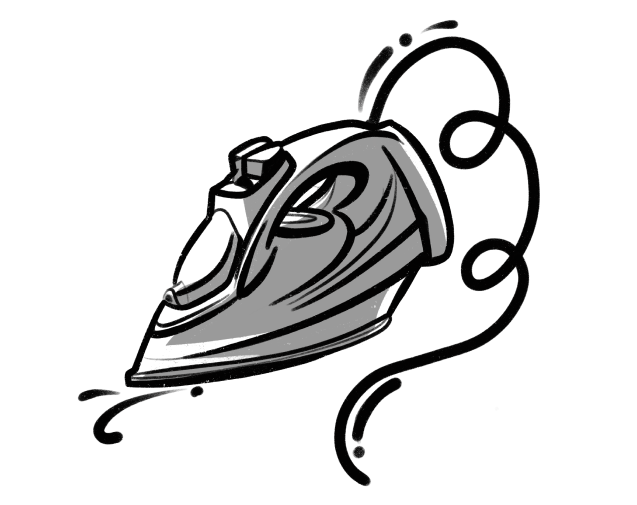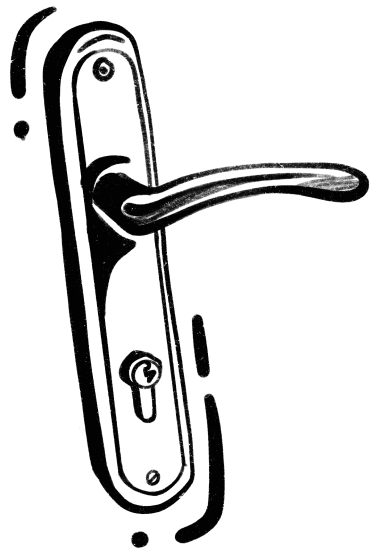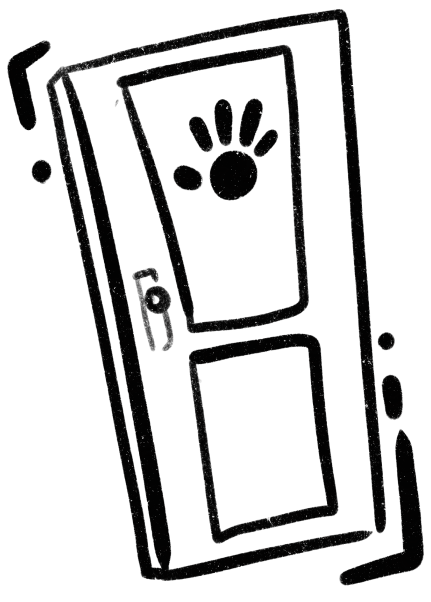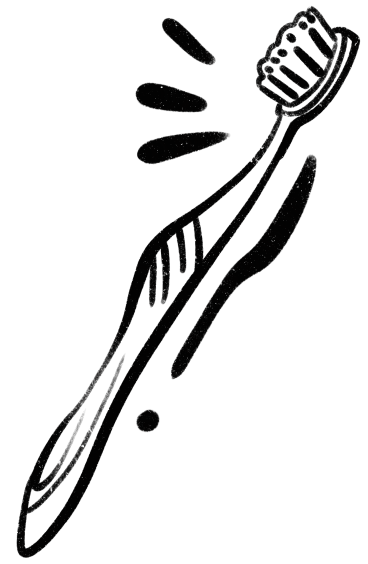The Evolution of Familiar Inventions
In the world of modern technology, we sometimes fail to notice the simple and obvious inventions that we use every day, often without considering the evolutionary journey they have undergone to become as convenient and indispensable as they are today.
Let’s embark on an exciting journey into the past to discover the impressive path some things have traveled, allowing each of us today to enjoy every invention.
Scarecrow
One of the simplest and oldest inventions, the scarecrow, continues to be one of the most important tools for protecting crops today, and its transformation over time is truly astonishing.
It is believed that the first scarecrow appeared about 3,000 years ago in Egypt, during the Neolithic Revolution when humans transitioned from hunting and gathering to sedentary farming. This period was marked by the expansion of cultivated areas and, consequently, an increase in threats to crops from birds.

Thus, humans faced the need to protect their crops from bird raids. Observing the behavior of birds, people noticed that the intruders were most afraid of the sight of a person waving their arms. Based on this observation, farmers decided to create something resembling a human figure to scare off unwelcome guests.
The first scarecrow was made from available materials: sticks and nets. Later, scarecrows were supplemented with straw, old clothes, and a hat. The effect was remarkable: birds, seeing the scarecrow, would scatter in fear.
Thus, this primitive method of protection proved to be surprisingly effective. Scarecrows became an integral part of agricultural culture, as their use was economically beneficial, especially in small villages with limited labor resources. Scarecrows did not require constant human presence and could effectively protect crops for extended periods
The reputation of the field protector quickly spread worldwide. Various countries sought to modify the scarecrow in their own ways, but the essence of the invention remained the same.
The ancient Greeks, for example, used statues of Priapus, the god of fertility, which had a frightening appearance. They believed the fierce look of the divine statue scared off birds, but later they abandoned this idea and returned to simple straw-stuffed figures.
In Japan, scarecrows known as “kakashi” were used to protect rice fields. They were made of straw and old clothes.
In medieval Europe, scarecrows were also made of straw and old clothes in the form of human figures, but to enhance the effect, they were supplemented with noise-making devices such as wooden clappers, flags, and bells.
With the development of technology, scarecrows became more diverse and modified. They were now supplemented with plastic, metal, and fabrics of various colors, but the real breakthrough came with electronic devices that mimicked the sounds or movements of predatory birds.
In the 1930s, patents for more modern bird deterrent devices began to appear. For example, mechanical figures were developed that could move and make sounds.
Modern scarecrows are significantly different from their predecessors, now equipped with motion sensors, sound generators, and light signals powered by solar batteries for autonomy. Moreover, scarecrows have become programmable according to the time of day and bird activity.
In today’s world, the production of scarecrows has reached industrial and corporate scales, with market leaders emerging.
Bird-X has become a leader in developing sound and ultrasonic devices for deterring birds. Their devices use recorded predator cries and other sounds to scare birds away from agricultural and industrial sites.
Agrilaser has developed devices using lasers, which have become popular due to their effectiveness and the ability to be used over large areas.
Thus, the simple scarecrow has undergone an incredible evolution, from a stick with a net to modern electronic technologies that use a combination of ultrasound, lasers, motion sensors, and programmed sound signals.
Amazing Facts About Scarecrows:
– Birds are most afraid of scarecrows in the shape of a human.
It doesn’t matter if the scarecrow has an angry face or not. What matters is that the most effective scarecrow has raised arms, mimicking waving.

– The presence of a scarecrow does not scare away all birds. For example, studies have shown that the number of ducks decreases by 95% in the presence of a scarecrow, while kingfishers do not notice it at all.
– Frequently moving the scarecrow around the garden or field increases its effectiveness, as birds do not have time to get used to its immobility.
– Bright clothing scares birds better than clothing in muted colors.
Iron
It’s unlikely that anyone who picks up an iron thinks about the evolution of this ironing tool. Its history, by the way, spans thousands of years.
One of the earliest irons, similar in heating method, was a simple metal pan used in China in the first century AD. Pans were filled with hot coals and then pressed against fabric to smooth it.

In medieval Europe, irons were flat metal plates with handles, heated over a fire and then used to press materials. These were known as “flat irons.” They were primitive but effective.
In the 17th century, charcoal irons emerged. They were made of cast iron and had a special compartment for coals, which maintained a high temperature for an extended period. These were called “charcoal irons.”
A turning point in the history of irons came in the late 19th century with the invention of the electric iron. The first patent for an electric iron was issued to American inventor Henry W. Seely in 1882. Seely’s iron was heated by an electric current and was much more convenient and safer to use compared to charcoal irons.
In 1905, American inventor Earl Richardson improved the electric iron. Now the iron’s soleplate heated more evenly. This iron was named “Hotpoint.”
In 1926, the company Eldec (Electric Household Utilities Corporation) introduced the first steam iron. This iron greatly improved and simplified the ironing process. Steam irons quickly gained popularity, becoming an essential household item.
In the 1950s and 1960s, irons with thermostats and temperature regulators were developed, allowing users to set the appropriate temperature for different types of fabric.
In the 1980s, non-stick coatings began to be used on iron soles, preventing fabric from sticking.
At the end of the 20th century and the beginning of the 21st century, irons with self-cleaning systems appeared. These systems prevented scale buildup, extending the iron’s lifespan.
Modern irons are equipped with various intelligent functions: automatic shutoff in case of overheating or prolonged inactivity, pressure sensors, and even the possibility of wireless use.
Amazing Facts About the Iron:
– According to Max Vasmer’s etymological dictionary, the word “iron”
(in Russian, “утюг”) originates from the Turkic language *ütüɣ, and in Turkish, it is derived as ütü. The Turkic philologist Mahmud al-Kashgari mentioned in the 11th century: “үтүк – an iron in the shape of a spatula, which is heated and used to warm the pile of clothing and smooth it.”
– An iron in expensive London hotels is not just a gadget for ironing clothes. Hotel guests demand that morning newspapers be ironed so that the ink does not stain their hands. This tradition in England has been around for a long time. Previously, maids and footmen ironed newspapers with a cast-iron iron heated on coals.

– Once, the English newspaper Sunday Telegraph held an unusual culinary contest – the main condition was to cook dishes using household appliances typically used for other purposes. Third place went to rice with curry, cooked in a washing machine at 99 degrees. Second place went to salmon, cooked in a dishwasher. The grand prize was won by Michael Raphael, who fried fillet of sole in butter sauce on an iron.
– In Russia, until the early 17th century, clothes were not ironed. They were washed, wrapped wet around a rolling pin, and rolled with a long wooden board with ribs called a “rubeľ.” The ribs softened the fabric for more comfortable clothing. Later, the rubeľ became metal. It was first heated in a stove and then wrapped with a damp cloth. In this way, clothes were simultaneously dried and smoothed. The tradition of using a rubeľ persisted in villages in some regions until the 20th century.
– The weight of a cast-iron iron could reach up to ten kilograms. Naturally, ironing with such an iron alone was extremely difficult.
Door Lock
The history of the common door lock, which now comes in various and highly secure forms, is no less fascinating. But let’s see where it all began!
The first door lock known from historical sources was created in Ancient Egypt about 4,000 years ago. This lock is known as the Aegean lock or “pin-tumbler lock,” which means “door closure.” Aegean locks were used in Ancient Egypt and consisted of a wooden beam supported by metal pins in hinges. A key inserted into the lock lifted the pins, allowing the lock to open.

From the 1st to the 5th century AD, Roman locks became widely known. They were more advanced, with more complex mechanisms, and the keys to these locks acquired a serrated surface.
In the Middle Ages, locks were divided into several types: bolt locks, key locks, and padlocks. The development of metal production and metalworking allowed for the creation of more reliable and complex locks resistant to tampering.
In the 18th century, cast locks were developed for the first time, made from cast iron using the casting method. These locks were stronger and harder to break into.
In 1778, London locksmith Robert Barron invented a lock that was immediately dubbed the “Best Lock in the World” because it can be considered a precursor to modern mechanical locks. The invention was a breakthrough in lock technology, and such a lock has remained in its design to this day. Its uniqueness was in having a double-action system, meaning it used two sets of levers that had to be raised to a certain height with a key before the lock would open.
In the 19th century, cylinder locks were invented, which are still used today. They include mechanisms with movable elements in the form of cylinders, providing a more complex locking system. Cylinder locks have become the standard for door locks, as their intricate design makes them difficult to break into.
In the 20th century, electronic locks began to develop, operating based on electronic signals, biometric data, or RFID technology. They provide a high level of security, can be integrated with other security systems, and offer controlled access.
The first electronic lock was invented in 1975 by American Joseph Dessy. This lock, called the “E-Key,” was the first electronic lock to use electronic keys instead of mechanical ones. The keys could be programmed for access at certain times or specific hours. The lock itself was battery-powered, allowing it to be used in various conditions, including places where wiring for power supply was not possible.
Amazing Facts About Locks:
– Harry Houdini: The famous illusionist, known for his skill in escaping from locked boxes and chains secured with large and reliable locks, acquired his ability in childhood. At the age of 11, he worked as an assistant in a workshop that produced keys. It was there that he gained his super ability to pick any lock.
– Unique Keys: All lock manufacturers claim that each lock’s key is unique. Despite these assertions, there is still a chance of unlocking someone else’s door with your key, although it is considered negligible. The probability ranges from 1 in 200 to 1 in 100,000.
– Keys to the City: There is a tradition of giving keys to the city to outstanding residents. Nowadays, this happens rarely and holds only symbolic significance. However, in the Middle Ages, such a gesture was either a symbol of capitulation during an attack or a sign of honor and complete trust. Small towns were surrounded by high fences, and the city gates were locked at night. Only high-ranking city residents and key holders could freely come and go at any time.

– Locksport: It turns out that criminals do not always pick locks to steal property. In some countries, competitions are held to see who can pick any lock the fastest. This hobby is known as locksport and emerged relatively recently, about 20 years ago. Anyone can participate in international competitions.
Doors
Another fascinating journey into the world of unnoticed evolution invites us to explore such an essential element of our lives: the door. Indeed, would the invention of the lock have come about if there were no doors?
Originally, about 3,000 years ago, doors were simple elements made of wood or stone, used as entrances to dwellings. Doors were often massive and served more to mark boundaries than to prevent intrusions.

In the Middle Ages, doors began to play an important role in protecting castles and fortresses. They were reinforced with locks to ensure security.
During the Renaissance and Enlightenment, the improved skills of craftsmen allowed for the creation of more complex and aesthetically pleasing doors. Doors now played a role not only in protection but also as symbols of status and wealth.
In the Industrial Age, along with the development of industry, there was a door boom. Doors began to be mass-produced from a wide variety of materials, from metal to glass.
Today, the introduction of smart technologies in doors has allowed for the automation of access control, monitoring the door’s status, and integrating doors into smart home systems. Some smart doors use scanners, fingerprint readers, and other biometric methods for user identification. Built-in cameras and video intercoms allow residents to see and communicate with visitors before opening the door. Additionally, doors can be opened and closed remotely via the internet using mobile apps or web interfaces.
The Story of a Door (based on true events): Gates of Paradise
In 1401, a competition was announced in Italy for the creation of new bronze doors for the Baptistery of San Giovanni in Florence. The contest attracted many prominent artists of the time, including Lorenzo Ghiberti and Filippo Brunelleschi. Ghiberti won the competition due to his unique style and mastery of bronze work. His project impressed the judges with its combination of technical perfection and artistic expression.

It took Ghiberti over 20 years to create the artistic masterpiece later called the “Gates of Paradise.” These gates consisted of ten large panels, each illustrating scenes from the Old Testament. Ghiberti used a new technique of perspective to give depth and realism to his reliefs, a groundbreaking step that had a significant impact on the subsequent development of art and sculpture.
The gates received their name from Michelangelo, who was struck by their beauty. The artist remarked that they were fit to be the entrance to paradise. These doors became a symbol of Florentine craftsmanship and the revival of classical art, playing an important role in the history of the Renaissance.
Today, these gates are considered one of the greatest works of art and engineering, symbolizing humanity’s pursuit of perfection and beauty.
Toothbrush Evolution
The evolution of the toothbrush is perhaps one of the most fascinating stories. Just think about what our distant ancestors used to clean their teeth!
The earliest mentions of toothbrush precursors can be traced back to ancient Egypt and Babylon (around 3500–3000 BCE), where sticks with a split end on one side and a pointed end on the other were described. The pointed end was used to remove food particles, while the other end was chewed to clean teeth using fibers from wooden sticks. These “brushes” were made from special types of wood known for their disinfectant properties, containing essential oils. Some tribes in Africa still use branches from Salvadora or white Ilima trees (Willow) to make such “brushes.”

In China during the Chang and Han periods (3rd century BCE), early examples of toothbrushes made from stiff plant fibers or horsehair have been discovered.
In Russia, during the reign of Ivan the Terrible, toothbrushes were a common sight among the boyars at royal feasts. They consisted of sticks with bundles of bristles attached to the ends, known as “tooth brooms.”
In Europe, it was considered improper to use a toothbrush until the 18th century. However, after the publication of the book “The Surgeon Dentist” by French dentist Pierre Fauchard, the acceptance of toothbrushes began to grow. They were made from animal bristles, such as those from pigs or horses, attached to a handle made of wood or bone.
A toothbrush similar to the modern tooth-cleaning device was created by the Englishman William Addis around 1780. He drilled holes in a piece of cow bone and passed bundles of pig bristles through them, securing them with glue. The company founded by William Addis, “Wisdom Toothbrushes,” still exists today.
In the mid-19th century, toothbrushes with nylon bristles began to be mass-produced in the United States, making them more accessible and effective.
The first electric toothbrush was developed in Switzerland in 1954. The device was powered by household electricity, but mass production of such brushes began only in the 1960s.
Today, toothbrushes use advanced materials for bristles such as nylon or polyester. They effectively remove plaque without damaging tooth enamel. Some brushes use ultrasonic technology, which employs sound waves for plaque removal and gum massage. Additionally, some modern brushes are equipped with sensors and Bluetooth connectivity for tracking and analyzing the effectiveness of tooth cleaning.
Amazing Facts About Toothbrushes:
– In 2003, Americans recognized the toothbrush as the top invention they couldn’t live without.
– The most expensive toothbrush costs $4,000. Its body is made of titanium and it can function as both a manual and electric brush.
– Using a toothbrush helps remove dental plaque, preventing periodontal diseases. These diseases are dangerous as they can lead to pneumonia, arthritis, and cardiovascular diseases. Thus, a toothbrush can be said to save lives.
– On average, people spend 38.5 days of their lives brushing their teeth. However, if everyone followed the rule of brushing twice a day, this would amount to 122 days.
– An average toothbrush has about 2,500 bristles.

The Roman Empire has fallen. But we have scientific content that doesn’t survive, it triumphs!
Thank you!




